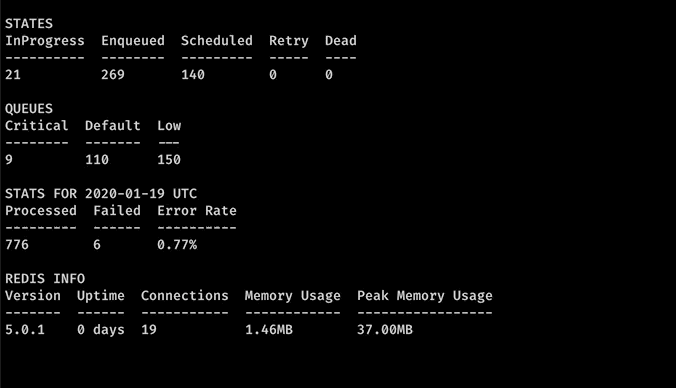-
-
Notifications
You must be signed in to change notification settings - Fork 744
Queue Priority
This page explains how to configure asynq background processing to suite your needs.
By default, Server will create a single queue named "default" to process all your tasks.
If you need to assign a priority to each task, you can create multiple queues with different priority level.
Example:
srv := asynq.NewServer(redis, asynq.Config{
Concurrency: 10,
Queues: map[string]int{
"critical": 6,
"default": 3,
"low": 1,
},
})This will create a Background instance with three queues: critical, default, and low.
The number associated with the queue name is the priority level for the queue.
With this above configuration:
- tasks in critical queue will be processed 60% of the time
- tasks in default queue will be processed 30% of the time
- tasks in low queue will be processed 10% of the time
Now that we have multiple queues with different priority level, we can specify which queue to use when we schedule a task.
Example:
client := asynq.NewClient(redis)
task := asynq.NewTask("send_notification", map[string]interface{}{"user_id": 42})
// Specify a task to use "critical" queue using `asynq.Queue` option.
err := client.Enqueue(task, asynq.Queue("critical"))
// By default, task will be enqueued to "default" queue.
err = client.Enqueue(task)We can inspect queues with asynq stats command.

You can see the number of tasks in each queue in the "QUEUES" section of the output.
If you need to create multiple queues and need to process all tasks in one queue over other queues, you can use StrictPriority option.
Example:
srv := asynq.NewServer(redis, asynq.Config{
Concurrency: 10,
Queues: map[string]int{
"critical": 3,
"default": 2,
"low": 1,
},
StrictPriority: true, // strict mode!
})This will create a Background instance with three queues: critical, default, and low with strict priority. In strict priority mode, the queues with higher priority is always processed first, and queues with lower priority is processed only if all the other queues with higher priorities are empty.
So in this example, tasks in critical queue is always processed first. If critical queue is empty, then default queue is processed. If both critical and default queue are empty, then low queue is processed.
-- From AllenRen